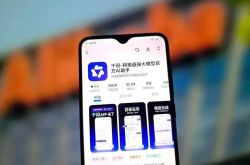China's AI Cloud Starts to "Vie for Supremacy"
![]() 11/19 2025
11/19 2025
![]() 327
327

Volcano Engine Leads the Challengers' Segment, Ranking First Among Chinese Providers
As the global tech sector zeros in on the rapid advancement of large-scale models, a more pertinent question arises: How can we translate this groundbreaking technological prowess into tangible productivity across various industries?
While the competition over the scale of model parameters is exhilarating, the true linchpin of the upcoming computing era is the capacity to construct, deploy, and manage AI applications.
At this juncture, the market craves an authoritative "selection guide."
Two days ago, Gartner, a globally acclaimed IT research and advisory firm, timely unveiled its inaugural Magic Quadrant for AI Application Development Platforms report. This is not merely a product assessment but also a potent signal to the industry: AI application development platforms have officially come of age as an independent and significant sector, with market differentiation now underway.
Gartner's initiative aims to steer enterprise developers and decision-makers who are bewildered by the swift evolution of AI technology. Those familiar with Gartner's Magic Quadrant (MQ) know that as a globally recognized "barometer" of the IT industry, it has accurately foreseen industry shifts on multiple occasions, wielding considerable influence in the field.
This is largely attributable to the uniqueness of its evaluation methodology. Unlike some institutions that engage in "paid rankings," Gartner MQ's assessment process is highly autonomous. Analyst teams conduct rigorous qualitative and quantitative analyses over several months, scrutinizing and positioning top global vendors across two dimensions: "strategic completeness" and "implementation capabilities," ultimately culminating in the quadrant chart.
Its conclusions frequently serve as a vital reference for global enterprise IT procurement. Hence, merely appearing in the quadrant is a testament to strength, while ranking at the forefront is a strong endorsement of one's global market position.
Turning our attention back to the report, Google, with its Gemini series of large-scale models and the large-scale model platform VertexAI, continuously iterates and ranks first globally in "implementation capabilities." Similarly, Microsoft leads in "strategic completeness" through its investments and strategic positioning in large-scale models and computing power platforms.
Behind this ranking methodology lies a crucial message.
Today's large-scale models are no longer isolated technological entities but have evolved into a comprehensive "development-deployment-implementation" ecosystem, becoming the cornerstone infrastructure for enterprise digital transformation.
Over the past two years, the number of global large-scale model vendors has surged, but most players either lack practical implementation cases despite having platform concepts or focus solely on model training without providing supporting toolchains. Gartner's evaluation criteria precisely target these industry pain points. It does not emphasize the height of model parameters but rather whether the platform can genuinely simplify AI application development processes, lower entry barriers, and promote AI accessibility.
For the Chinese market, this report holds even greater significance.
According to the report, Volcano Engine leads the global "Challengers" segment with its Doubao large-scale model and Volcano Ark large-scale model service platform, ranking first among Chinese providers. Its "implementation capabilities" place it fifth globally and first in China. Meanwhile, Alibaba Cloud and Tencent Cloud have also successfully entered the Challengers' segment.

Magic Quadrant for AI Application Development Platforms (Source: Gartner)
This marks the first collective breakthrough by Chinese providers in a global authoritative assessment of large-scale model platforms, foreshadowing that the global large-scale model industry is entering a new phase of "platform-based competition"—where the strength of a single model is no longer paramount; the ability to construct a closed loop of "models-tools-computing power-scenarios" determines success.
From this vantage point, Volcano Engine's lead represents not just a corporate triumph but also international recognition of China's large-scale model industry's "implementation capabilities," making it a formidable contender in global large-scale model competition.
A new narrative on the AI application ecosystem is quietly unfolding.
01
New Signals Behind the Evolving Competitive Landscape
As mentioned earlier, Gartner MQ's quadrant chart is never a mere ranking game but a microcosm of global tech industry competition. Taking the Magic Quadrant for AI Application Development Platforms as an example, the information it reveals is both anticipated and surprising to many.
What was anticipated is the ranking in the Leaders' segment.
Google and Microsoft, two tech behemoths with the earliest and deepest investments in cloud and large-scale models, unsurprisingly occupy the poles of implementation and strategy.
Google tops the "implementation capabilities" ranking with its Gemini model family and VertexAI platform's deep engineering heritage, showcasing its prowess in transforming cutting-edge technologies into stable, scalable services. Microsoft leads in "strategic completeness" through its deep partnership with OpenAI, Azure's global computing power network, and the ambitious blueprint of the Copilot ecosystem. Amazon AWS also remains firmly in the Leaders' segment, reflecting the heritage and inertia of traditional cloud giants in transitioning to the AI era.
However, the real highlights and variables often lie in other segments.
OpenAI, the "hottest star" that ignited the global AI wave with its large-scale model technology, did not appear in the Leaders' segment but was classified as a "Visionary."
Gartner's judgment sheds light on the current market reality: possessing the most cutting-edge model technology does not equate to having a mature, enterprise-grade development platform for complex scenarios. Enterprise applications demand a full lifecycle toolchain, stable service guarantees, secure deployment solutions, and cost-controllable billing models—areas where OpenAI, as a model provider transitioning to a platform, still needs refinement.
Equally noteworthy is CoreWeave, a cloud service provider that began with GPU computing power leasing and is considered NVIDIA's "prodigal son." Its unique positioning earned it a spot among "Niche Players," reflecting how, amid massive AI computing power demand, vertical, high-performance computing infrastructure has become a scarce resource and a parallel market segment.
Among these, Volcano Engine's leading position in the "Challengers" segment and its rating of "fifth globally and first in China for implementation capabilities" warrant in-depth interpretation.
In Gartner's evaluation system, "Challengers" signify providers with robust execution capabilities and clear market positioning, able to swiftly respond to customer needs and deliver value while demonstrating strategic foresight.
Volcano Engine's core strength lies precisely in Gartner's most valued "implementation capabilities"—a dimension assessing product maturity, richness of customer cases, service response speed, cost control ability, and other key indicators. For enterprise customers, "implementation capabilities" hold far more practical significance than mere technological parameters, as an AI platform that cannot create value is merely a castle in the air.
Industry insiders view Volcano Engine's lead as essentially a victory for the "AI Cloud" model.
Unlike traditional cloud computing, which merely provides computing power support, the core logic of "AI Cloud" is to deeply integrate "model capabilities, development tools, and implementation services" into a one-stop solution.
In the large-scale model era, enterprises no longer require isolated computing power or model APIs but need end-to-end support to rapidly transform AI ideas into practical applications.
Volcano Engine's core strength lies in its closed-loop capability of "models + tools + implementation": the multi-modal performance of the Doubao large-scale model, the maturity of Volcano Ark's toolchain, and its leading customer cases across industries like consumer goods, automotive, and finance form the core competitiveness that propels it ahead of domestic providers.
In fact, this "AI Cloud" model is reshaping the competitive logic of cloud computing.
According to Gartner's previous forecast, by 2029, 50% of cloud computing resources will be utilized for AI workloads, compared to less than 10% currently. This implies that the AI Cloud market is just beginning, and future cloud providers will no longer be mere computing power suppliers but "infrastructure operators" of the AI era.
Overall, this report conveys three key signals.
First, the global large-scale model platform market has entered an "ecosystem-based competition" phase, where advantages in a single link are unsustainable. Second, implementation capabilities have become the core competitive edge, with enterprise customers' actual needs driving market choices. Third, Chinese providers have risen to occupy significant positions in global competition, especially Volcano Engine's performance, marking that China's "AI Cloud" model is globally competitive.
02 Volcano Engine's "First Place": No Small Feat
During the development of the large-scale model industry, a common misconception existed: that as long as model parameters were high enough and technology advanced enough, the market would be won.
However, as the industry transitions from a "technological explosion phase" to a "scale-up implementation phase," enterprise customers' demands have become increasingly rational—they seek not the "strongest model in the lab" but AI solutions that are "truly usable, effective, and affordable."
According to sources close to Volcano Engine, the company recognized this issue early on. In their view, AI application development in the large-scale model era is essentially a new technological paradigm. Rather than blindly pursuing speed, they prioritize getting the direction right and then achieving growth from 0 to 1 and 1 to 100.
Unlike traditional AI development, which often follows a "small model + customization" workshop approach, AI application development in the large-scale model era is a systems engineering challenge involving the coordination of "brain," "nerves," and "limbs."
The core challenges can be summarized in three points: First, is the brain intelligent enough? The intellectual ceiling of the underlying large-scale model determines the complexity of tasks the application can achieve. Second, are neural reflexes swift enough? The model's reasoning performance determines whether user experience is smooth. Third, are energy consumption and costs manageable? This directly determines whether AI applications can move from demos to scalable accessibility.
Volcano Engine's solution is a dual-wheel drive: using the "Doubao large-scale model family" as a powerful intelligent foundation and "Volcano Ark" as an efficient connection and empowerment platform.
At the "brain" level, the Doubao large-scale model family encompasses a model matrix covering large language models, visual understanding, image creation, video generation, speech synthesis, and more, with each capability striving for industry SOTA (state-of-the-art) levels.
This full-modal layout enables Volcano Engine to meet diverse needs across industries and scenarios.
For instance, the recently released Doubao image creation model Seedream4.0's breakthroughs in detail restoration and stylized expression have unlocked multiple implementation scenarios in creative marketing and content creation. Meanwhile, the launch of the Doubao video generation model Seedance 1.0 pro fast not only maintains high quality but also reduces costs by 72%, enabling scalable implementation in content creation scenarios.

Seedream4.0 Ranks First in Artificial Analysis's Text-to-Image Benchmark
More importantly, the Doubao large-scale model continuously innovates in "cost control."
For many enterprise customers, cost is a critical factor determining whether large-scale models can be scaled. If training and invocation costs are too high, even the most capable models remain confined to a few premium scenarios.
Volcano Engine understands this well and has consistently driven down large-scale model usage costs to industry lows through technological cost reductions and business model innovations.
·In May 2024, when the Doubao large-scale model first offered enterprise services, it pioneered bringing large-scale model pricing per thousand Tokens into the "cent era" through Infra reconstruction, significantly lowering the entry barrier for enterprises.
·In June 2025, Volcano Engine introduced the industry's first pricing model based on "input length" intervals and launched TPM guarantee packages and model units, allowing enterprises to choose flexibly based on actual needs and further unlocking technological dividends.
·Recently launched large-scale model routing products enable developers to automatically balance model effectiveness and price in workflows, achieving refined cost control.
This "continuous cost reduction" strategy and technological strength have made the Doubao large-scale model one of the most widely used and scenario-rich large-scale models in China.
Enabling this "powerful brain" to land efficiently and with low barriers is "Volcano Ark," the bridge.
If the Doubao large-scale model provides high-quality "ammunition," Volcano Ark offers the complete "launch system" from aiming to firing. It builds a full toolchain around the core proposition of "moving from having good models to using them effectively."
Specifically, the reinforcement learning framework veRL, open-sourced in October last year, has become one of the most popular reinforcement learning frameworks in global industry and academia, greatly accelerating Agent implementation. As context engineering becomes the decisive factor in Agent application success, Volcano Ark sequentially launched products like PromptPilot, Responses API, and Viking memory bank to help enterprises fully explore model capability boundaries and enable AI application systems with self-learning and evolutionary capabilities.
A developer shared with Xinmu that, two years ago, constructing a simple Agent application involved integrating model APIs, developing memory modules, and writing tool invocation code, a process that typically took at least 1-2 weeks. Today, leveraging Volcano Ark along with capabilities like Coze and HiAgent, this entire process can be compressed to just a few hours. Gartner specifically highlighted this "intention-driven intelligent agent creation" feature in its report, lauding it as having "redefined Agent development efficiency standards."
Compared to other domestic competitors, Volcano Engine's core distinction lies in its clear "implementation-centric" strategy from the very beginning.
The research and development trajectory of the Doubao large model has consistently centered around industry needs, while Volcano Ark's tool development prioritizes lowering implementation barriers. Its industry solutions are grounded in practical experience amassed from serving numerous leading clients. This closed loop of "demand-research-implementation-feedback" empowers Volcano Engine to swiftly respond to market shifts and continually refine its products and services.
03 What Does Being "Triple First" Signify?
Within Volcano Engine's AI business ecosystem, three pivotal metrics constitute the core of its "first-place" identity: the largest Tokens scale in China, leading in public cloud large model service revenue, and ranking first in product strength according to Gartner's evaluation. These three "firsts" are interconnected, forming a positive cycle of "scale-value-product" that unveils the unique developmental trajectory of China's large model industry.
Firstly, the top Tokens scale is a direct outcome of the market's preference, reflecting the user loyalty and market penetration of Volcengine's large models. Tokens, as a key metric for large model utilization, directly mirror the actual usage frequency and dependency level of enterprise clients. After all, only large models capable of genuinely solving problems and offering controllable costs can sustain ongoing usage.
It's worth noting that Volcengine's advantage in Tokens scale wasn't achieved overnight.
Last year, Volcengine ranked first in China for public cloud large model usage volume, with its airport advertisements sparking widespread industry discussions. By the first half of this year, an IDC report indicated that Volcengine accounted for 49.2% of the domestic public cloud large model service market share, meaning that for every two Tokens on China's public clouds, one was generated by Volcengine. As of September this year, the Doubao large model has been processing an average of 30 trillion Tokens daily, marking an increase of over 80% since the end of May.
Behind this string of data lies continuous endorsement from a multitude of enterprise clients.
Specifically, in the consumer sector, leading brands such as Danone, Haidilao, and Midea have enhanced their refined operational capabilities through the Doubao large model. In the financial sector, 80% of leading securities firms, including Guotai Junan Securities and Haitong Securities, and 70% of systemically important banks have opted for Volcengine's intelligent agent solutions. In the energy sector, PipeChina West-East Gas Pipeline Company has constructed the group's inaugural AI Agent collaboration platform using HiAgent on Volcano Ark, covering 11 business domains. In the education sector, over half of China's 985 universities have collaborated with Volcengine.
These leading clients from diverse industries form the core support for Volcengine's Tokens scale and validate the practicality of its large models in various scenarios. The growth in Tokens scale essentially mirrors the growth in enterprise client demand, directly demonstrating the transition of large models from being "optional" to "essential."
Secondly, ranking first in public cloud large model service revenue signifies that Volcengine's large model business has achieved a "scale-to-value" transformation, dispelling industry doubts about the profitability of large models.
During the early stages of large model industry development, numerous vendors fell into the trap of "exchanging traffic for free services," resulting in large Tokens volumes but meager revenues, failing to establish a sustainable business model. Volcengine's first-place revenue ranking precisely proves the viability of its business model: by combining "strong models + low costs + easy implementation," enterprise clients are willing to pay for large model services, achieving a balance between "scale and value."
It's worth noting that, unlike some vendors that seize market share through low-price strategies, Volcengine's pricing strategy has consistently revolved around "creating value for clients." By reducing its own costs, it enables clients to obtain higher value at lower prices, rather than engaging in simple price competition.
This "value-oriented" pricing model allows Volcengine to maintain a high market share while achieving synchronized revenue growth, creating a win-win situation where "clients benefit and the company profits." To some extent, this also provides new insights for the commercialization of China's large model industry: the commercial value of large models ultimately hinges on the value they create for clients. Only by genuinely solving practical business problems can sustainable profitability be achieved.
Finally, Gartner's assessment of Volcengine's product strength as China's best serves as an endorsement from an international authoritative institution, granting global recognition to the "first-place" perception.
If Tokens scale and revenue represent market-level recognition, then Gartner's assessment provides authoritative certification at the technical and product levels. It not only proves that Volcengine's product strength has reached a global leading level but also breaks the international market's stereotype of Chinese large model products as "technologically backward."
The combination of these three "firsts" forms Volcano Engine's unique competitive barrier: the growth in Tokens scale brings vast amounts of user data, which feeds back into model iteration and enhances product strength. The improved product strength provides clients with higher value, driving revenue growth. The increased revenue can then feed back into R&D investment, further expanding Tokens scale and product advantages.
Once this "scale-value-product" positive cycle is established, it becomes difficult to break.
From an industry perspective, the significance of these three "firsts" extends far beyond the success of a single enterprise. It marks that China's large model industry has transitioned from "technical following" to "global leadership" in a new stage.
In the past, China's technology industry often played a follower role in core technology areas. However, in the emerging field of large models, Chinese vendors have achieved a leapfrogging over European and American vendors through continuous efforts in implementation capabilities, cost control, and toolchain construction. Volcengine's performance is a concentrated reflection of this trend—it is no longer a mere technological follower but has rewritten the competitive rules of large model platforms through its own innovation.
This article is an original work by Xinmu. For reprint authorization, please apply.
— END —








